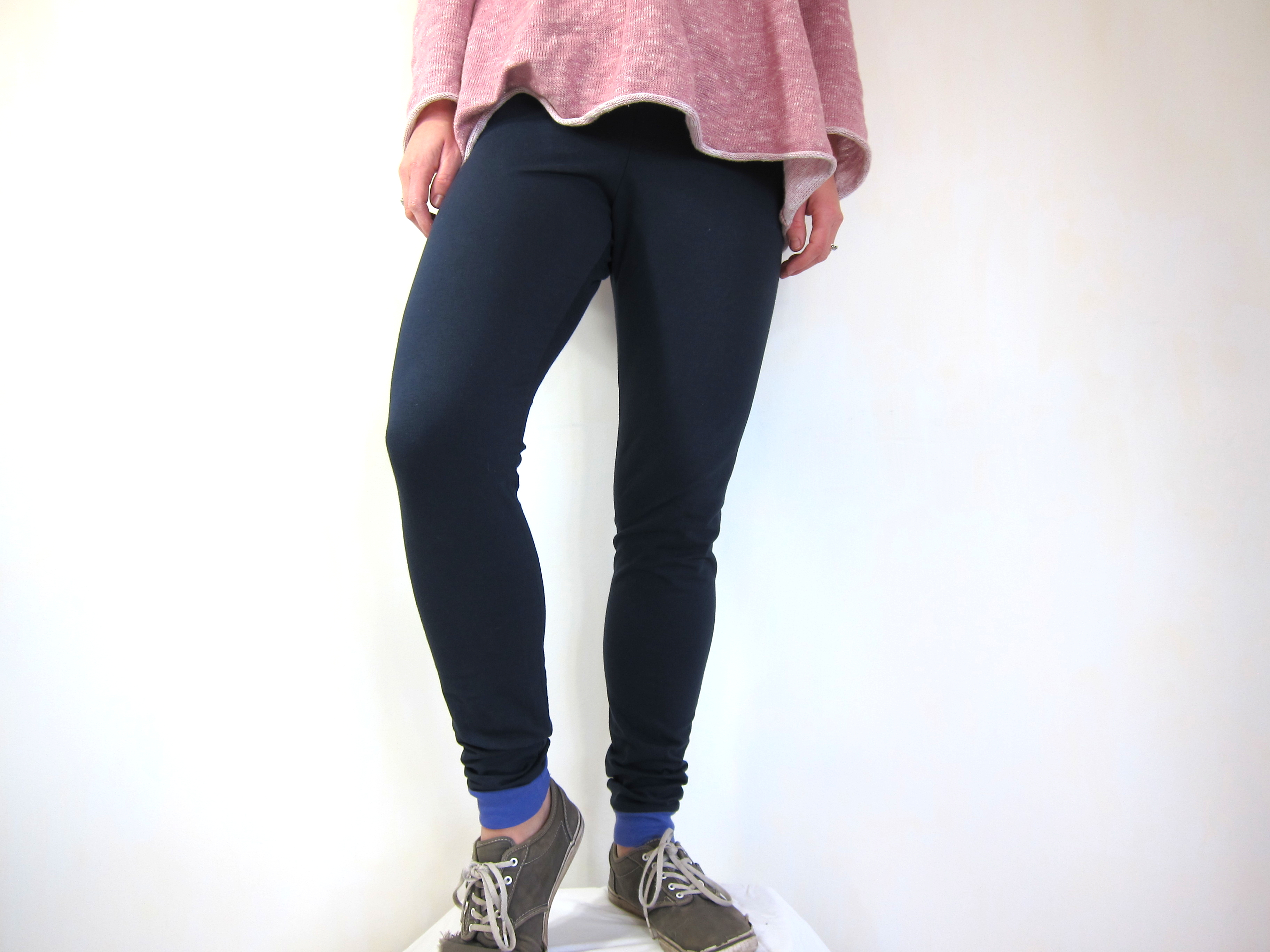
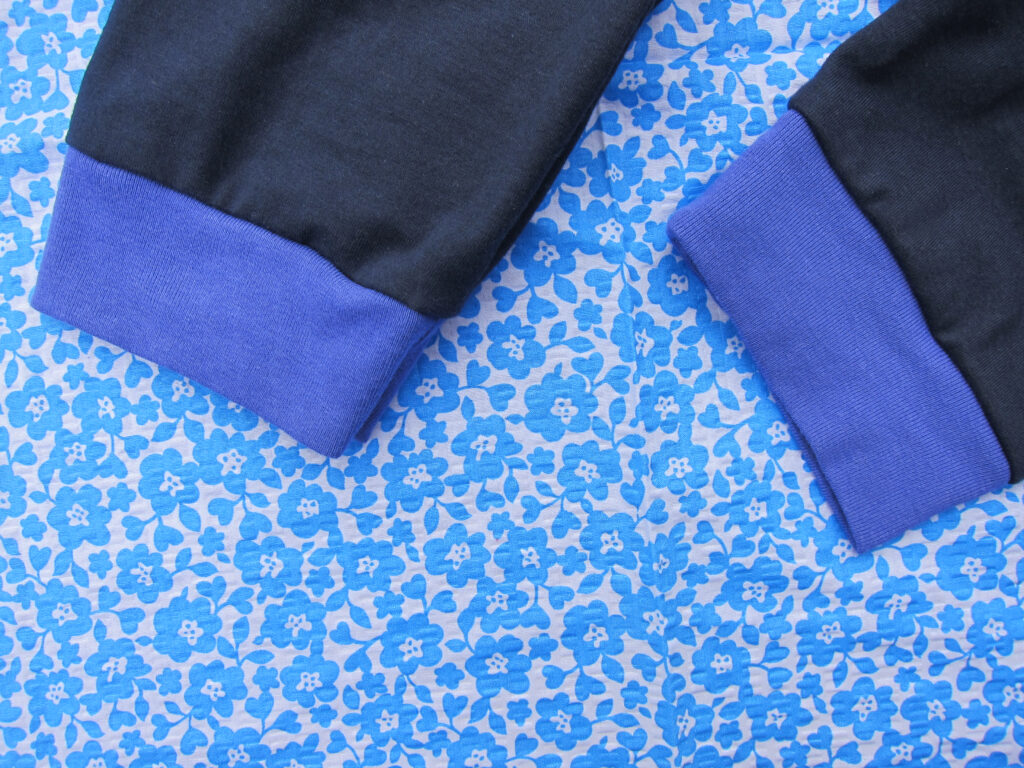
Start building a collection of hand-sewn wardrobe staples with a simple leggings project. Celebrate the softness and versatility of hand stitches by making a pair of attractive, comfortable leggings that you’ll want to wear all the time.
Leggings have simple construction, so they are a relatively quick, rewarding hand-sewn garment project. In this two-session live Zoom class, taught by Louisa Owen Sonstroem, you will learn how to hand sew with stretchy knit fabric. Try your hand at stitches and finishing techniques that are just right for knits. Equipped with these skills, you’ll be ready to hand sew lots of other stretchy clothes, too.
The course will take place over two sessions, and will consist of:
- a pre-class video detailing how to draft your own custom leggings pattern
- several pre-class videos showing how to lay out and cut your fabric pieces
- two live, virtual stitching classes with Louisa
- access to a private platform group for questions and sharing
Please note that hand sewing is a slow experience. Class time will include accelerated demonstrations, but there will also be some slow stitching work. You will need to do lots of stitching outside of class time if you wish to complete your leggings. Also, there will be some prep work to do before the first class, including several hours if you wish to draft your own custom leggings pattern. Louisa’s pre-class videos will walk you through this work, but you will need to set aside time for it.
Dates
Sunday, March 13th and Sunday, March 20th, 2022
Time
11am – 1:30pm ET
Location
Zoom, a link will be sent to participants
the day before class.
Cost
$200
This class is part of the Hand-Sewn Wardrobe Basics Series. You can purchase the entire series here: https://tatter.org/events/hand-sewn-wardrobe-basics-series/
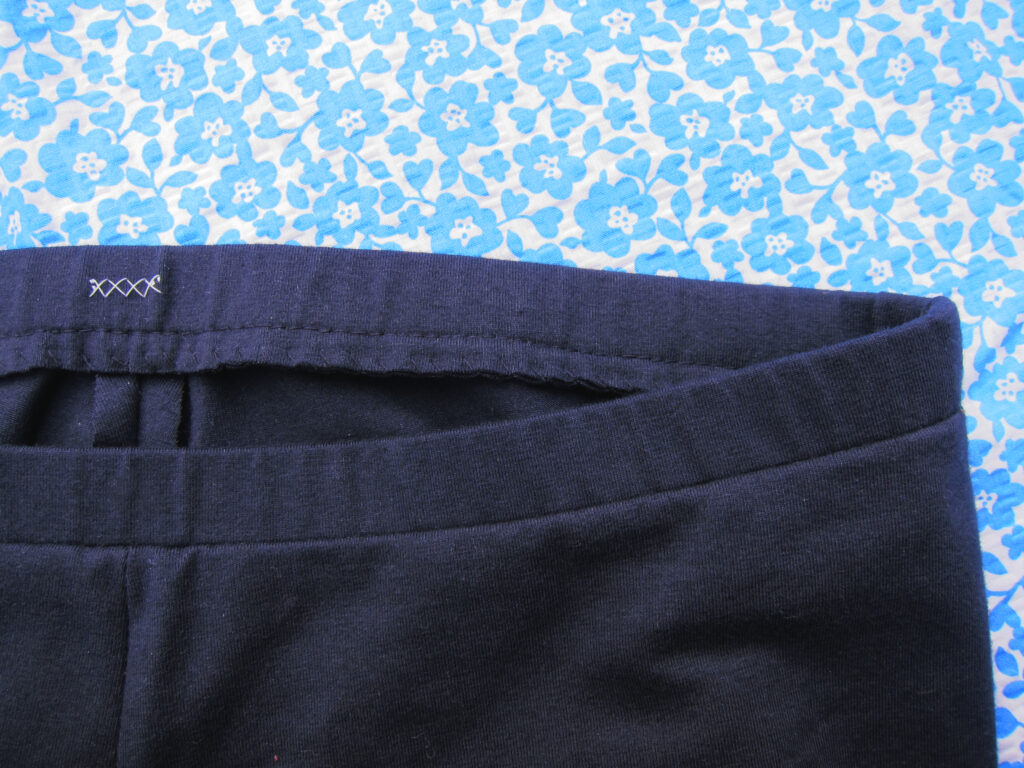
CLASS MATERIALS
- A leggings pattern (Louisa will share how to draft your own custom pattern in a pre-class video, but if you’d rather purchase and assemble a pre-made one, Louisa recommends the Patterns for Pirates “Peg Leg” pattern, which is a free, downloadable PDF, and accommodates up to a 64” hip. If you’re purchasing a pattern, be extra aware of the pattern’s required stretch percentage for fabric, and be sure to purchase fabric that has enough stretch to achieve the intended fit.)
- Knit fabric with significant four-way stretch (both horizontal and vertical). Look for fabrics with at least 5% spandex content, so that the fabric will have good vertical stretch. A cotton-spandex blend would be a good choice. Yardage amount will depend on your size and the yardage’s width, but 2 yards is often more than enough. To be safe, check your pattern and size to determine the amount needed. If you’re drafting your own pattern, follow Louisa’s guidelines in the pre-recorded video to determine yardage needs.
- 3/4”-wide regular elastic. This will be hidden away inside a casing, so don’t worry about the color. The length needed will depend on size — you’ll need enough to wrap around your waist, plus a little bit extra. You can measure your body to find this amount.
- A spool of cotton or poly-cotton thread in a coordinating color.
- Extra fine straight pins. (Size 20, 1 ¼” long, are good, but use what you can find.)
- Ballpoint hand sewing needle. Examples are https://www.amazon.com/Singer-Point-Assorted-Needles-10-Count/dp/B002PQEZ3K or https://www.amazon.com/Dritz-10-Piece-Ball-Point-Needles/dp/B005573G3Q
- Clear gridded ruler or other ruler.
- Fabric-marking tool, such as a water-soluble marker or pencil, hera marker, chalk, etc.
- Pencil, paper scissors, and tape.
- Big sheets of paper for patternmaking (or you can tape together printer-size sheets).
- Fabric shears.
- Optional: beeswax, thimble, yardstick.
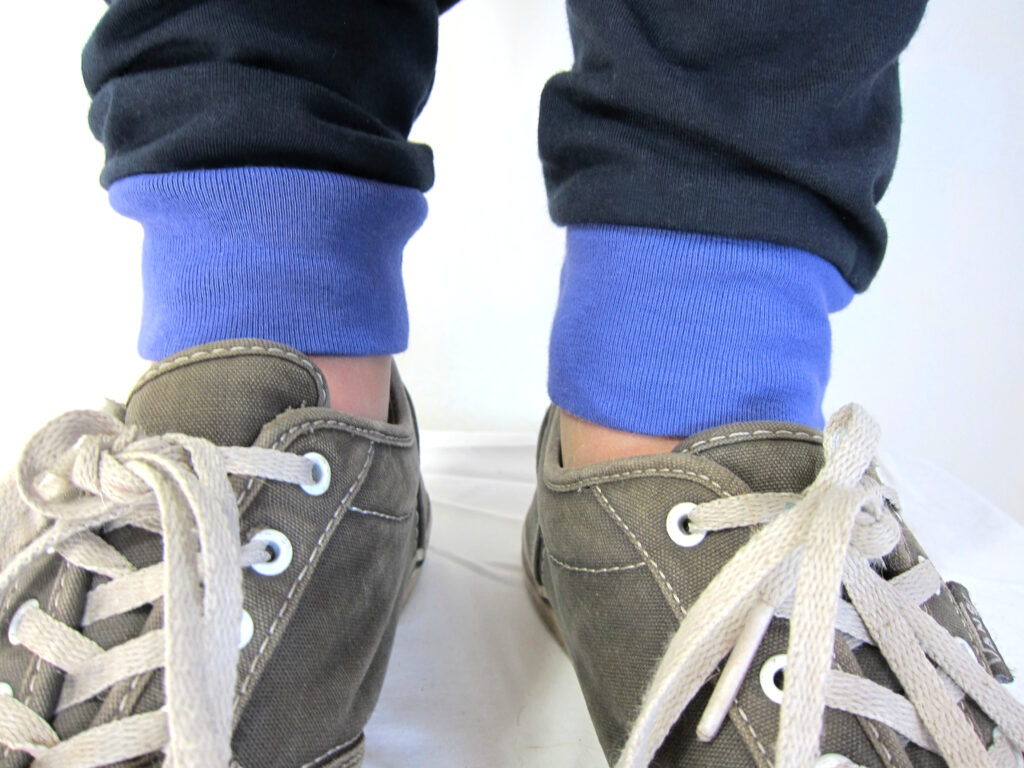
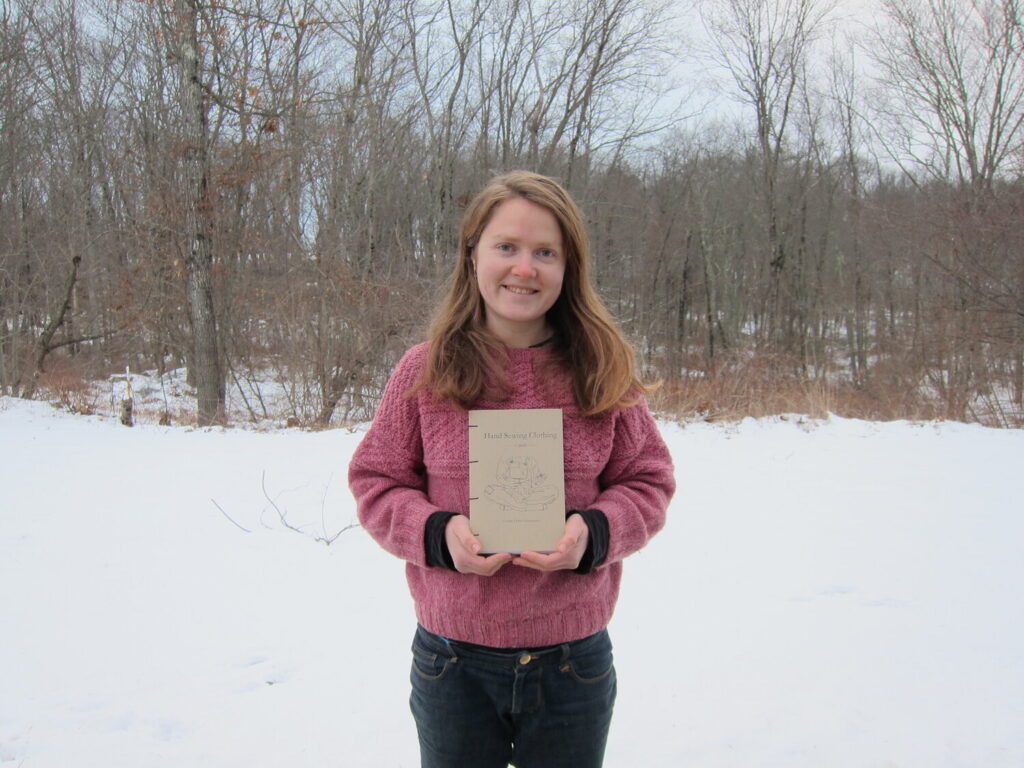
OUR TEACHER
Louisa Owen Sonstroem
Louisa Owen Sonstroem believes there is little more powerful than working with one’s hands, because manual skills are empowering, enduring, and slow. Whether she is drafting sewing patterns with a pencil and paper, hand-sewing “slow fashion” clothing, or foraging wild plant fibers to spin on a drop spindle, Louisa relishes using primitive tools in sophisticated ways.
Louisa holds a B.A. from the University of Connecticut and an additional degree from the Fashion Institute of Technology, where she studied patternmaking and fashion design. She also studied patterns at RISD and MassArt. She has worked in the garment industry for several years, most recently in technical design at Macy’s and now Eileen Fisher. During her time at Macy’s she also ran a weekly employee mending workshop, building skills, community, and sustainable momentum.
You can find Louisa on Instagram @louisaowensonstroem
